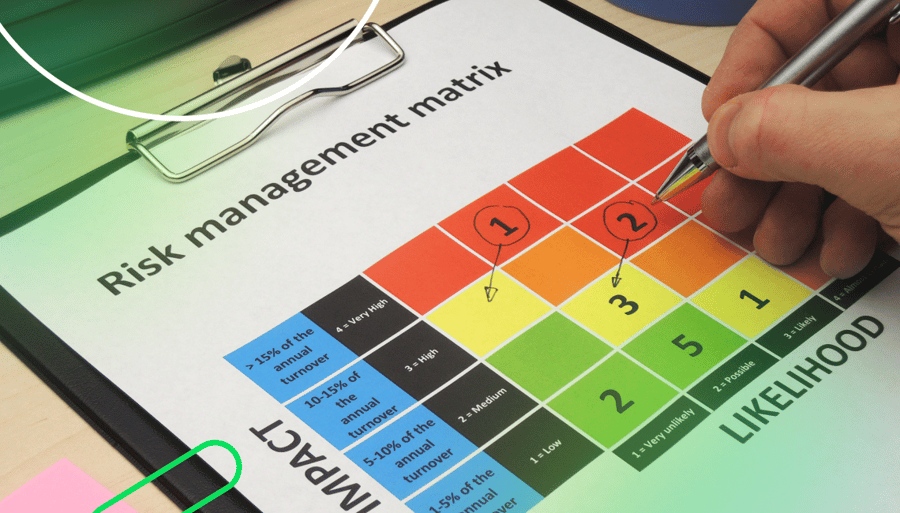Key takeaways:
- What is contingency planning? This is a documented Plan B for achieving project goals when the original plan fails, using alternative methods or resources.
- Why is it important for project managers? It allows for thorough planning, streamlines processes, minimizes downtime, and boosts team confidence in navigating risks.
- How should one write a contingency plan? Identify potential risks, assess their likelihood and impact, outline proactive measures, and establish response protocols.
- What are the key components of a contingency plan? Regularly revise the plan, involve your team for feedback, and ensure it's accessible for reference.
- Can you provide examples of contingency plans? Yes, risks can include resource availability, unexpected health issues, and scope creep, each requiring tailored proactive and response measures.
Have you ever grabbed an umbrella on your way out the door — just in case it rained later?
Have you and your friends ever picked a backup restaurant in the event that the one you really want to eat at was too crowded?
Have you set a default meeting place with a friend or family member so that you know where to reunite if you get separated at an event or in a busy shopping mall?
Whether you realized it or not at the time, you created a contingency plan. These alternative options are useful in a variety of contexts — from unforeseen weather to busy restaurants. But there's another area where they really shine: project management.
In this guide, we're digging into exactly what contingency planning is, why it's crucial for smooth projects, and how you can create a plan that helps you feel confident and prepared — regardless of what banana peels get thrown in your path.
What is contingency planning?
The easiest way to think of a contingency plan is as your documented Plan B. It's your backup plan. It's the route you'll take if and when the method you originally laid out is no longer a possibility.
A contingency plan focuses on achieving the same outcome as your original plan, but it uses a different approach. Think about it in the context of project management. You and your team need to complete a project, but what if:
- A crucial team member leaves?
- Your budget is reduced halfway through?
- A supplier is late getting you something you need?
- A resource you were counting on is no longer available?
… or any other potential risk that could throw your entire project off the rails? How will you bounce back from that hiccup and deliver a successful project anyway?
Your contingency plan leads to the same endpoint: the completed project. However, it enlists a different method or different resources to arrive at that destination.
Ideally, contingency planning should be proactive and not reactive (though, it's not always possible). The process requires that you think through potential risks and then outline the ways that you'll respond to them.
If and when that hazard actually jumps in your way, you have that backup plan ready to go — rather than having to scramble to figure your next steps out in the heat of the moment.
Why is a contingency plan necessary for project managers?
The importance of a contingency plan can be summed up with this classic idiom: the best-laid plans often fall apart.
You've likely seen this happen already — whether it's a client unexpectedly changing direction, some critical software crashing the exact minute you need it, or a freelancer who's booked when you were depending on them to chip in on a project.
In those circumstances, your contingency plan gives you an alternate option to pursue so that you can move forward with your project with a little less stress and panic. Here's why this sort of backup plan is an asset for any project:
Plan projects more thoroughly
Planning your project seems straightforward when you assume that everything will go exactly the way you imagine it. However, contingency planning involves anticipating potential risks and threats to your project. That means you'll end up with a thoughtful and thorough project plan that gets your project across the finish line no matter what.
Streamline processes
If and when something falls apart in the middle of a project, figuring out what your other options are can leave you scrambling. With your contingency plan, you did a lot of that groundwork upfront. You can snap right into moving on to your backup route, without having to figure it out as you go.
Minimize fallout and downtime
Similarly to the above, your contingency plan saves time. When you encounter a risk, you don't need to delay your project even further as you determine next steps. Additionally, needing to adapt in the middle of a project without any planning can leave you feeling stuck with low-quality resources or less-than-ideal options. Your contingency plan is a thoughtful alternative that (hopefully) won't leave you feeling like you're compromising on quality.
Move forward with more confidence
You as the project manager, your team, and your company's leadership will feel reassured knowing you have that backup option to keep the project moving when circumstances change. In short, contingency plans make your team and your project more adaptable and resilient.
In some industries, a contingency plan isn't something that's nice to have — it's a must. Think of a pilot having to make an emergency landing or the hospitals that had to get clever to deal with overwhelming demand during the pandemic.
Sometimes contingency plans are about more than delivering successful projects — they can quite literally have life-saving consequences.
How do you write a business contingency plan?
The benefits of a backup plan are undeniable. Wondering how to do contingency planning for your own project or team? Here are seven steps to follow.
1. Identify potential risks
The goal of your contingency plan is to prepare for the unexpected. To do so, you need to get a solid grasp on what risks and threats could throw your project off track.
That's exactly what you'll do in this first risk assessment step. Think through all of the potential roadblocks, errors, and issues that could sabotage your project.
Keep in mind you'll never identify all of the prospective risks. In general, project risks are separated into three categories:
- Known risks: These are likely the first ones that will spring to mind. They're the most obvious risks that are readily identified by you and your team
- Unknown risks: These might not be as obvious to you and your team. However, other stakeholders or your company's leadership might have more insight into these potential risks, such as something happening in the competitive landscape
- Unknowable risks: These are the risks that there's no way to anticipate without a crystal ball, like an accident or major system failure
So while you'll never pinpoint all of the potential roadblocks for your project, it's still important to think through what could potentially get in your way.
Whether it's a necessary resource that's no longer available or a cost you didn't anticipate, add it to your list of prospective project risks. It can be helpful to involve your team in this step, too. They can bring unique experience and fresh perspectives to identify potential problem areas you might not have spotted on your own.
2. Understand the likelihood of those risks
Figuring out everything that could present a problem for your project can be a discouraging process. You can quickly find yourself heading down a rabbit hole of worst-case scenarios.
Even when you commit to contingency planning, you won't be able to hash out a response plan for every single possible circumstance. Your goal here is to create alternate plans for the most likely risks you could encounter. With your long list of risks in hand, it's time to think through just how probable those risks are.
You've already locked in a resource and it's ready to go? It doesn't seem likely that you'll run into an issue, so you probably don't need to spend your time contingency planning for that. But what if your budget is still in the approval process and fluid as a result? You'll probably want a backup plan for your project's finances in case you don't get the money you were planning on.
3. Determine the impact of those risks
Understanding the likelihood of risks is helpful for figuring out exactly which ones require contingency plans. But what if you still end up with a laundry list of dangers you could potentially deal with? Considering their impact is another way to filter through them.
What would happen if this risk became a reality? What is the threat to your project? What's the potential fallout?
Thinking through these circumstances might feel a little doom and gloom, but it's helpful for identifying the risks that pose the biggest danger for your project. That way you can invest your time and energy into creating contingency plans for those, which will make the most meaningful difference for your project.
4. Outline proactive measures
You've identified your project's biggest risks. Before you start thinking about how you'll respond if they crop up, challenge yourself to think more proactively. Are there things you can do to avoid those risks in the first place?
Could you add an extra step to your process to prevent errors? Could you reach out to a larger roster of freelancers who have availability? Could you remove a feature or deliverable entirely to adjust the scope of the project?
Contingency plans are helpful fallback options when a risk becomes an inevitability. But for extra peace of mind (and less stress), it's worth thinking through more proactive risk management steps you could take to steer around those potential setbacks altogether.
5. Hash out your response measures
Remember that classic sentiment about best-laid plans? Sometimes your efforts to proactively steer around risks are unsuccessful. This step is all about answering this question: 'What happens then?'
What steps will you take to change course and get back on track when you encounter a problem? How will you respond and adapt? What does that process involve?
This is the meat of your contingency planning — it's where you'll actually hash out your most realistic alternate option (or options, if you think you need several) so you know where to turn when something crops up.
6. Share the plan with your team
With the first draft of your contingency plan ready to go, it's time to share it with your team — not just to keep them in the loop on your backup options, but also to collect their feedback on your plan.
They might have some suggestions that are worth weaving into your document so you can move forward with an even more reliable plan.
Once you've incorporated any changes, save your contingency planning document somewhere safe and accessible so everybody can reference it when they need to.
7. Revisit (and revamp) your contingency plan
Plans change — and that applies to your contingency plan, too. When you create a contingency plan for a recurring process or a complex, long-running project, you might need to adapt your contingency plan as time goes on and as circumstances shift.
Set a regular reminder to frequently return to your contingency plan and ensure it's still accurate. Are all of those team members still here? Are all of the resources you included still available? Are there any other changes you need to account for?
As much as you want your backup plan to be rock solid and reliable, it's not more immune to changes than any other type of plan and strategy. The best thing you can do is stay on top of it with regular checks and updates.
3 contingency plan examples to inspire your own
You might think you need to be a fortune teller to come up with a valuable contingency plan. But by following the steps above, you can do your best to anticipate the biggest risks to your project and come up with a strategy for dealing with them.
Need a little more creative inspiration as you get more comfortable with contingency planning? Here are a few contingency plan examples to get your wheels turning:
Project contingency plan example #1: Company blog redesign
| Risk | Freelance web designer is booked |
| Likelihood | Medium |
| Impact | High |
| Proactive Measures |
|
| Response Measures | Contact alternate web designer to get work started immediately |
Event contingency plan example #2: Team retreat
| Risk | Team member(s) tests positive for COVID while we're on our retreat |
| Likelihood | Low |
| Impact | High |
| Proactive Measures |
|
| Response Measures |
|
Project contingency plan example #3: Scope creep
| Risk | Client's expectations, requests, and demands continue to balloon beyond what was originally agreed upon |
| Likelihood | Medium |
| Impact | High |
| Proactive Measures | Create a detailed SOW and require client's signature prior to starting work |
| Response Measures |
|
Expect the unexpected (and plan for it, too)
As the above samples show, contingency plans come in all shapes and sizes. Some are simple and straightforward while others will go into the minute details of who needs to do what.
Regardless of the level of complexity, the point of your contingency plan is the same: to give you an alternate route if that dreaded old cliché holds true and your original plan falls to pieces.
Much like snagging a 'just in case' umbrella on a cloudy day, your contingency plan gives you the reassurance that you have a backup plan — so you don't end up caught in the rain.
Wrike gives you a bird's-eye view of all of your team's work, resources, and capacity so you can develop even more realistic project plans — and more reliable contingency plans, too. Get started with your free trial of Wrike today.








